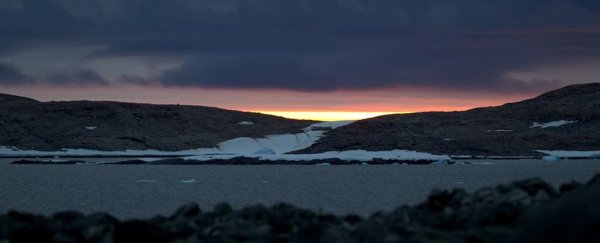Scientists have discovered a new type of bacterium, that most hardy of organisms, which can survive solely off the chemicals in air – and the discovery could change the way we think about life living on other planets.
The microbes have been found in Antarctica and can exist off a diet of hydrogen, carbon monoxide, and carbon dioxide, staying alive in the most extreme conditions where other food and energy sources are scarce.
Could low-level life forms on other planets be living off nothing but the gases in the atmosphere? It's a possibility we're now going to have to consider, according to the team from the University of New South Wales in Australia.
"Antarctica is one of the most extreme environments on Earth," says lead researcher Belinda Ferrari. "Yet the cold, dark and dry desert regions are home to a surprisingly rich diversity of microbial communities."
"The big question has been how the microbes can survive when there is little water, the soils are very low in organic carbon and there is very little capacity to produce energy from the Sun via photosynthesis during the winter darkness."
Freezing temperatures, very little water, months of darkness, strong ultraviolet radiation, and the weathering of freeze and thaw cycles: none of these conditions are particularly conducive to fostering life.
But studies have shown that life is there. So how is it surviving without the usual energy sources, typically carbon turned into sugar via photosynthesis?
To answer the question, researchers took soil samples from two ice-free parts of the continent, Robinson Ridge and Adams Flat, chosen because any sort of recognisable life or bacteria food source is pretty much non-existent.
By reconstructing the genomes of 23 microbes through studying the soil's microbial DNA with a shotgun sequencing method, using small sections of DNA to recreate the whole, the scientists were able to identify two groups of previously unknown bacteria they called WPS-2 and AD3.
What's more, the dominant species in the soil had genes with a high affinity to hydrogen and carbon monoxide, allowing them to harvest these gases from the air at a quick-enough rate to sustain life.
Little sunlight, no geothermal energy, few nutrients – no problem. It's the first air-eating lifeform we've ever seen, even if it's only a mostly dormant bacterium.
The next step is working out just how widespread these types of low-maintenance bacteria are, whether or Antarctica or elsewhere on the Earth. Eventually, such microbes might be found on other planets, needing no other food but the air that they breathe.
"This new understanding about how life can still exist in physically extreme and nutrient-starved environments like Antarctica opens up the possibility of atmospheric gases supporting life on other planets," says Ferrari.
The findings have been published in Nature.
UNSW Science is a sponsor of ScienceAlert. Find out more about their world-leading research.
